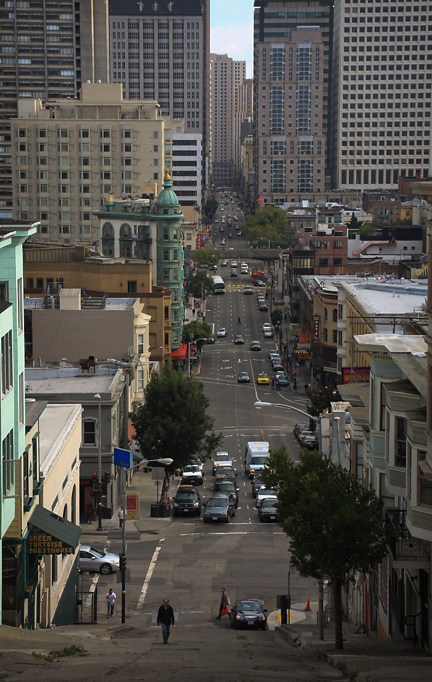F I R S T P R E V
P R E V 868
868 NEXT
NEXT LAST
LAST


Dirty Politics and Municipal Karma, Kearny Street
Looking down Kearny Street, from Telegraph Hill towards downtown, it's hard to imagine this area ever being a rustic frontier with more livestock than settlers. But before the Gold Rush, everything on the left side of the street was shoreline and everything on the right was not much more than sand dunes, cattle paths, and a few shacks.
Nearly wiped out three times by fire, Kearny Street also faced the ire of the landowners of Montgomery Street near Telegraph Hill who considered their own property to be the true heart of San Francisco.
The Montgomerytes, wary of a competing street lowering their land values went as far as to refuse the new street to be named, referred to only as the east side of Portsmouth Square. When the Jenny Lind Theater on Kearny became popular, the Montgomery Street faction convinced its owner to close it down and build a new theater, the Metropolitan, on Montgomery Street.
In similar fashion Kearny Street also lost the El Dorado saloon and the Union Hotel. The newly-vacated buildings were taken over by the city and became the Hall of Records, the Boards of Supervisors and Education, and the City Hall. Ironically it was these changes that led to the ascendance of Kearny Street and turned Portsmouth Square into San Francisco's nucleus and most sought-after property.
One final note: Kearny Street is often mistakenly thought to be named after San Francisco's populist political leader Dennis Kearney. In fact it was named after an early Military Governor of California, General Stephen W. Kearny years before the rabble-rousing, anti-Chinese Kearney was born.
[
MAP E-15 ]